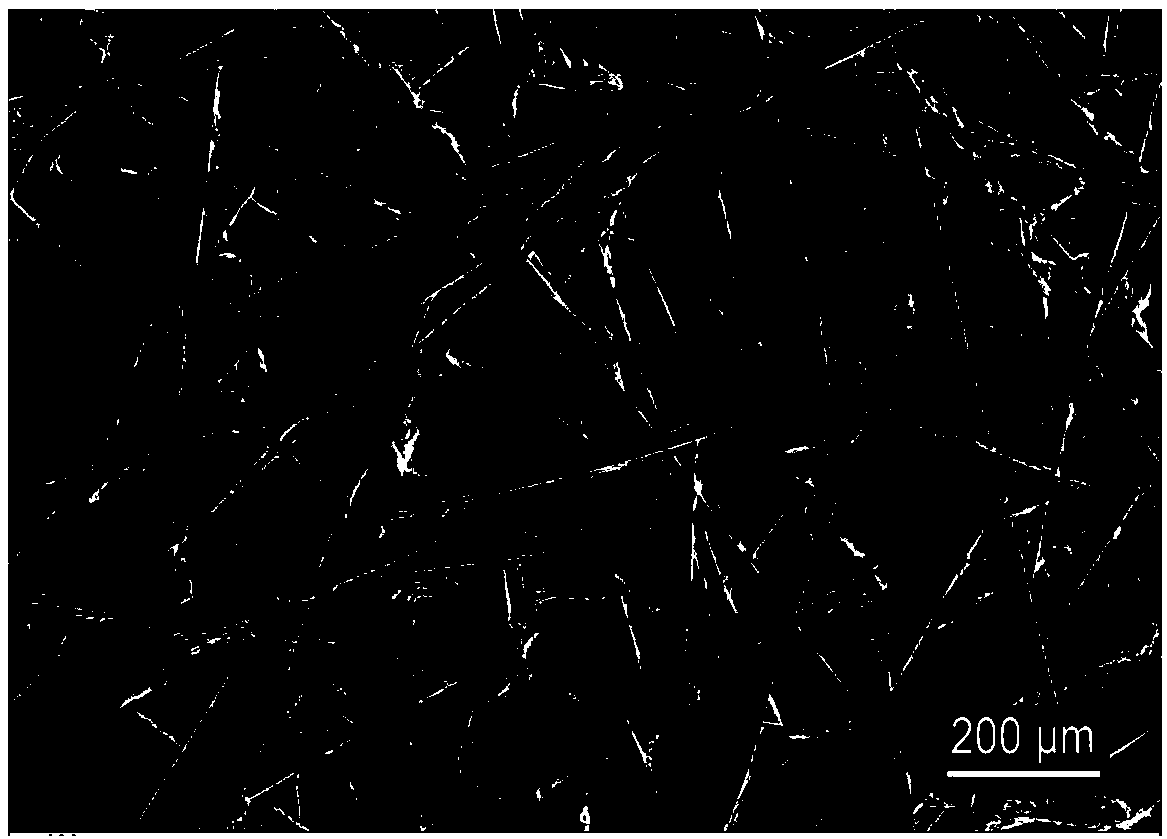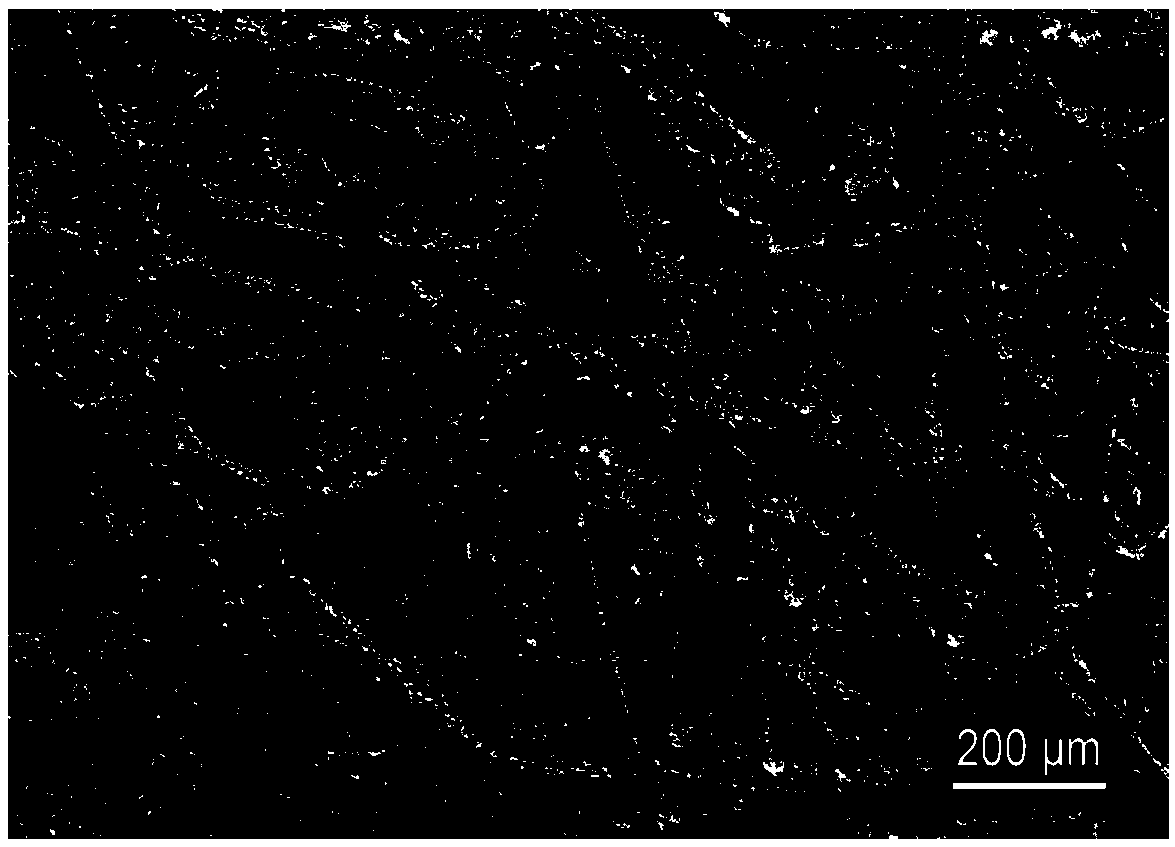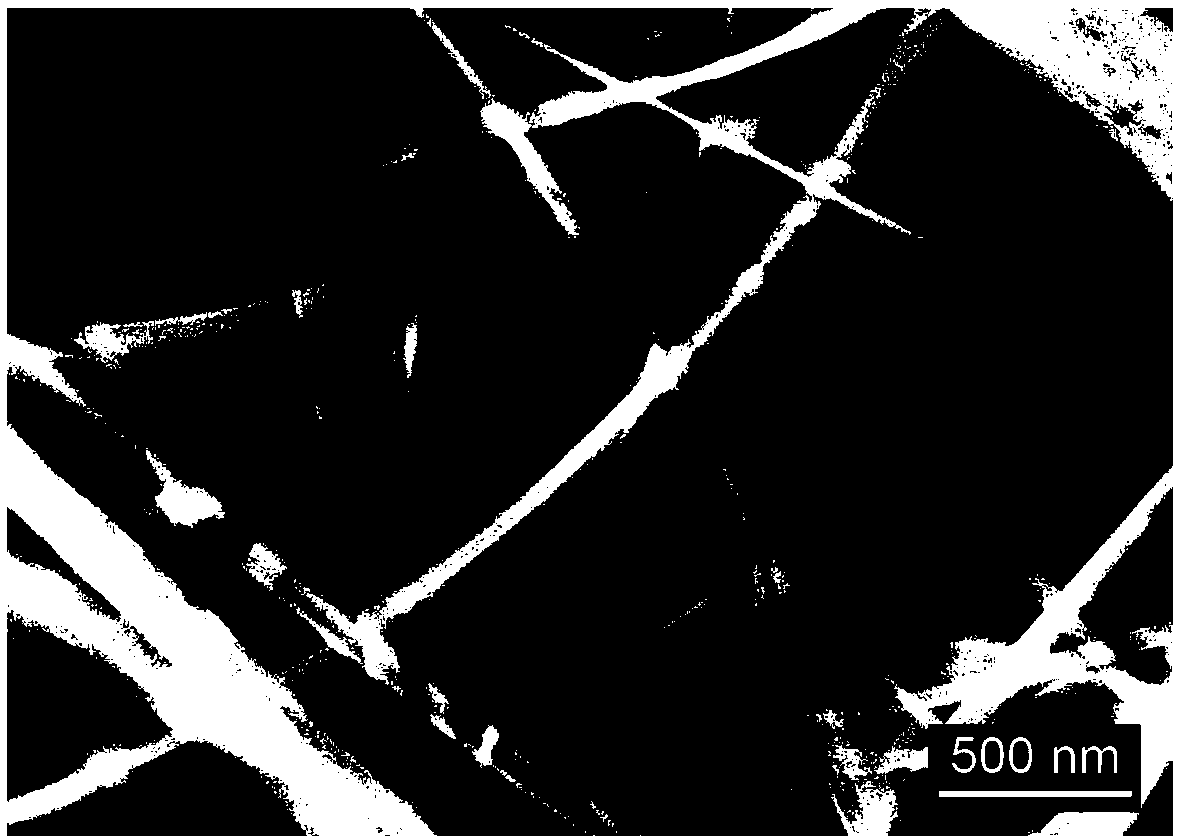Silver nanoparticle modified titanium dioxide nanofiber membrane material as well as preparation method and application thereof
A nanofiber membrane and silver nanoparticle technology, which is applied in the field of separation, analysis and detection of environmental pollutants, can solve the problems of limiting the practical application of nanofiber membranes, difficult to achieve interception of small organic molecules, and low mechanical strength of nanofiber membranes. The effect of easy large-scale industrial application, stable properties and simple preparation method
- Summary
- Abstract
- Description
- Claims
- Application Information
AI Technical Summary
Problems solved by technology
Method used
Image
Examples
Embodiment 1
[0053] This embodiment provides a method for preparing a titanium dioxide nanofiber membrane material modified by silver nanoparticles, comprising the following steps:
[0054] S0. Cut the carbon paper into small pieces of 50mm×20mm×0.20mm, then ultrasonically wash with acetone, isopropanol, ethanol and water for 10 minutes, and then dry at 80°C;
[0055] S1. Add 20mL tetrabutyl titanate into a 200mL beaker, add 100mL absolute ethanol while stirring, then add 0.2mL glacial acetic acid, and keep stirring at room temperature until the reaction solution is milky white to obtain a titanium dioxide sol;
[0056] S2. impregnating the carbon paper described in step S0 in the titanium dioxide sol, and adsorbing titanium dioxide nanoparticles on the surface of the carbon paper to obtain carbon paper loaded with titanium dioxide nanoparticles;
[0057] Described step S2 comprises the following steps:
[0058] S201. impregnating the carbon paper in the titanium dioxide sol, ultrasonical...
Embodiment 2
[0078] The titanium dioxide nanofiber membrane material modified with silver nanoparticles prepared in Example 1 was used to test the filtration performance and self-cleaning performance of organic dye molecules.
[0079] Firstly, the filtration performance of silver nanoparticles-modified titanium dioxide nanofiber membrane materials on organic dye molecules was tested. Positively charged rhodamine 6G (hereinafter referred to as: Rh6G) was selected as a model molecule to study the enrichment and filtration properties of silver nanoparticles modified titanium dioxide nanofiber membrane materials for organic molecules. The titanium dioxide nanofiber membrane material modified with silver nanoparticles was cut into small pieces of 2cm×2cm, and fixed in a self-made filter device with silicone rubber. Take 7mL concentration to be 10mg·L -1 The Rh6G solution is placed in a self-made filter device, and the solution is allowed to pass through the titanium dioxide nanofiber membrane ...
PUM
| Property | Measurement | Unit |
|---|---|---|
| Width | aaaaa | aaaaa |
| Thickness | aaaaa | aaaaa |
| Thickness | aaaaa | aaaaa |
Abstract
Description
Claims
Application Information
 Login to View More
Login to View More - R&D
- Intellectual Property
- Life Sciences
- Materials
- Tech Scout
- Unparalleled Data Quality
- Higher Quality Content
- 60% Fewer Hallucinations
Browse by: Latest US Patents, China's latest patents, Technical Efficacy Thesaurus, Application Domain, Technology Topic, Popular Technical Reports.
© 2025 PatSnap. All rights reserved.Legal|Privacy policy|Modern Slavery Act Transparency Statement|Sitemap|About US| Contact US: help@patsnap.com



